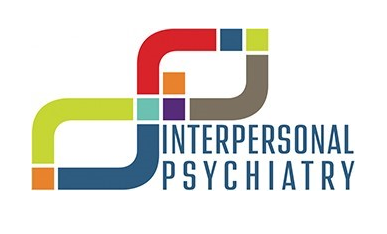How Does Psychotherapy Work?
One of the cruelest responses that a depressed person can hear is to just “get over it.” If it were that easy, that over 322 million around the world would not be grappling with depression.
A recently released World Health Organization survey reveals that over 322 million people globally deal with depression every year. And that estimate is a dramatic 18% increase from 2005.
On a global scale, about one out of every 20 people are burdened with depression.
This means that over 4% of the global population is grappling with depression. Depression is an unceasing sadness and disinterest in life activities caused by a chemical imbalance in the brain.
Depression is so pervasive and perhaps statistically undercounted due to lingering stigma that the WHO considers depression to be the primary cause of physical and mental disability in the world.
Depression is classified as a psychiatric disability in the guidelines of the Americans of Disabilities Act. Over 17.3 million Americans are diagnosed with depression every year.
Depression can cause people to become lethargic, catatonic, lose interest in life, neglect their health, become drug addicts, or develop severe health problems due to depression-derived inactivity or suicidal thoughts.

One primary reason why depression is considered to be the major leading cause of physical and mental disabilities is that biological resistance to depression treatment is regarded as a disability.
Therapy and antidepressants are the most traditional forms of depression treatment. Still, some medical researchers believe that over 40% of depression sufferers do not respond to conventional treatments or medications. In other words, their bodies and minds are resistant to all forms of treatment.
That means that no matter what treatments they endure or medications they take, nothing works for them.
Think about that. If we use the WHO global estimate, that means that about 130 million people globally are resistant to depression treatment. If we consider the number of Americans suffering from depression, then that means that 7 million Americans are immune to depression treatment.
Science always strives for effective treatments and cures. For example, electroconvulsive shock therapy, which administers controlled electric shocks to the brain, and ketamine infusion therapy, which safely administers a controlled substance as treatment, have shown to be very effective in treating patients resistant to other forms of depression treatment.
One of the most experimental yet noninvasive forms of depression treatment is transcranial magnetic stimulation. It is a treatment process involving the use of powerful magnetic fields.
Let’s talk about transcranial magnetic stimulation, how they work, what to expect during treatment, their efficacy rate, and whether it’s right for you.
Are you interested in transcranial magnetic stimulation? Contact Interpersonal Psychiatry today.
Related: What Are the Signs of Opioid Addiction?
What is Transcranial Magnetic Stimulation?
Transcranial magnetic stimulation, also known as TMS, is a safe and noninvasive kind of brain stimulation. Intensive scientific research has shown that the parts of the brain most implicated with depression are the amygdala, dorsomedial thalamus, and hippocampus.
Like antidepressant therapy or ketamine infusion therapy, no one knows why transcranial magnetic stimulation works as a depression treatment. The stimulation on brain cells caused by pulses of magnetic field energy may incrementally influence how neurons respond to neurotransmitters.
Transcranial magnetic stimulation devices concentrate powerful magnetic fields to noninvasively stimulate brain cells and neural pathways. The goal is to use targeted, repetitive pulses of magnetic field energy on strategic parts of the brain involved with depression and relieve symptoms of depression.
Transcranial magnetic stimulation is often referred to as repetitive transcranial magnetic stimulation, or rTMS. A TMS session could last as long as 60 minutes and involve exposing the patient brain to repeated, noninvasive pulses of concentrated magnetic field energy.
Anesthesia is not required in transcranial magnetic stimulation therapy. The most common side effect is mild headaches after treatment.
Transcranial magnetic stimulation therapy may not be an optimal treatment for patients with a history of epilepsy, seizures, or those with traumatic head injuries or severe neurological problems.
Over weeks and months, TMS patients may find relief from their depression, especially those resistant to traditional therapies and medications. You may be required to undergo Transcranial magnetic stimulation therapy treatment at least five times a week for two months to start, depending on the severity of your condition.
What Can I Expect During Transcranial Magnetic Stimulation (TMS) Treatment?
During your first treatment, the doctor and medical technicians performing the procedure will need to strategically identify the optimum places to place magnets around your head. They also need to diagnostically determine the right amount of magnetic energy dosage to apply to your brain.
No two transcranial magnetic stimulation therapy sessions are alike. Your therapy session will be medically designed according to your diagnosis and needs.
First, you will be seated in a comfortable reclining chair and may be given earplugs to wear. Then, an electromagnetic coil helmet will be put on your head.
The electromagnetic coil will be turned on and off several times, releasing pulses of magnetic field energy to your brain. You may feel a soft and painless tapping sensation and clicking sounds on your head due to the pulses of magnetic energy.
These sounds and sensations, manifestations of the TMS procedure working, may last a few seconds before a pause.
This procedure is a diagnostic procedure called cerebral mapping. Your doctor will incrementally increase the dosage of magnetic energy until your hands or fingers begin to twitch.
At this point, known as the motor threshold reference point, your doctor can determine the proper dosage for your TMS therapy and then adjust as necessary in subsequent sessions.
After your cerebral mapping and your dosage is set, your regular TMS therapy sessions will be the same. You will be alert and awake throughout the entire procedure.
Anesthesia won’t be required, and you should be able to resume regular activity afterward.
Transcranial Magnetic Stimulation Efficacy
According to studies by Harvard, up to 60% of patients resistant to traditional depression therapy and medical treatments respond to transcranial magnetic stimulation therapy.
About a third of depression patients who get transcranial magnetic stimulation therapy will experience complete remission. In other words, they become cured of their depression.
However, such results are never permanent. Within weeks or months, depending on the circumstances of your condition, you will have to schedule successive appointments for TMS therapy.
Get the Help You Need Today

Are you resistant to traditional depression therapy and treatments and want to try transcranial magnetic stimulation? Contact Interpersonal Psychiatry today.
Related: What To Do If You Think Your Child May Be Transgender


